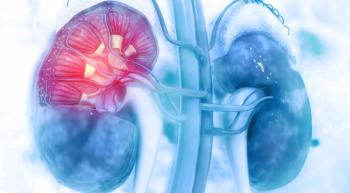
COVID-19 Leaves Its Mark on Cancer Care
As the impact of the coronavirus disease 2019 (COVID-19) pandemic lingers into the later part of 2020, consideration is needed regarding the lasting effects on patients with cancer who may have experienced delayed care or diagnosis.
As the impact of the coronavirus disease 2019 (COVID-19) pandemic lingers into the later part of 2020, consideration is needed regarding the lasting effects on patients with cancer who may have experienced delayed care or diagnosis.
Investigators conducted a survey involving health care representatives from the international oncology community to assess the preliminary effects of the pandemic and highlight major concerns regarding patient care. The results of the survey will be covered in detail during the European Society for Medical Oncology (ESMO) 2020 Virtual Congress.1
“Our survey confirms that COVID-19 has a major impact on organization of patient care and on the well-being of caregivers,” Guy Jerusalem, MD, PhD, head of the Breast Unit at Centre Hospitalier Universitaire du Sart-Tilman, Liège, Belgium, said during a presentation at the ESMO 2020 Opening Press Conference. “Clinical trial activity [is also affected], as well as continued medical education.”
Although rapid normalization of professional activities of health care workers was hoped for after the COVID-19 lockdown, it is now clear that there will be long-term impacts of the pandemic. Understanding how these resulting effects influence patients with cancer going forward will be crucial in the coming years.
“When you look into the future, the expected problem is the risk of delayed diagnoses of new cancer,” Jerusalem said. “In our hospitals, we see fewer new patients diagnosed, and the risk is that later we will see more patients with advanced-stage [disease] diagnosed with cancer. The economic consequences of COVID-19, which can affect access to health care and cancer treatments, has to be carefully evaluated.”
To assess the impacts of the pandemic on health care workers, a survey of 109 representatives from 18 countries—including Italy, France, Spain, the United States, Mexico, Brazil, and Argentina—were compiled. The majority of respondents were men (61.5%) who had a median age of 48.5 years. Most of the respondents worked in an academic (62.4%) or community hospital (29.6%), with a median number of years of worked in the oncology field of 20 (interquartile range, 10.5-25). Those specializing in breast cancer represented the majority of respondents at 60.6%, followed by gastrointestinal cancer (10.1%), urogenital cancer (9.2%), and lung cancer (8.3%). Other specialties were included in the survey but represented a low percentage of respondents.
Thirty-four percent of respondents reported that surgery was the treatment modality that was most affected by the pandemic, followed by chemotherapy (22.0%), radiotherapy (13.7%), checkpoint inhibitor therapy (9.1%), monoclonal antibodies (9.0%), and oral targeted therapy (3.7%).
Treatment adaptations were also noted by those from participating centers, including an increased use of both granulocyte colony—stimulating factor in 34.8% and erythropoietin in 6.4%. Therapy modifications that resulted in a reduction of treatment included decreased use of double immunotherapy in 11.1% of centers and a decrease in corticosteroid use in 21.9%.
Regarding a decrease in the use of corticosteroids, Jerusalem stated that there could be several potential reasons for this observation. “One can be that this is an immunosuppressive agent.
Maybe the risk of infection is increased [with its use],” he posited. “In my center, we had considered [decreasing] the dose of steroids during this time. The question was, ‘Do we increase the risk of infection…if we increase the use of steroids?” He noted that this strategy wasn’t based on any data, but rather a rationale that some centers employed based on what is known of steroid use.
ESMO President Solange Peters, MD, PhD, of University of Lausanne in Switzerland, also commented on this finding, stating that prior steroid use, or being on steroids at the time of COVID-19 infection, has now been associated with worse prognosis and increased mortality, based on findings from the TERVAOLT registry.2 She also stated that steroid use at infection baseline differs significantly from administration of these agents to help fight the virus.
Concerning the care of patients with breast cancer specifically, administration of everolimus (Afinitor) was affected in 18% of centers followed by CDK4/6 inhibitors in 8.9%. Only 2.2% of centers reported that endocrine therapy administration was affected.
Notably, Jerusalem stated that early cessation of anticancer palliative care was observed in nearly one-third of participating centers (32.1%), while nearly two-thirds of participants (64.2%) agreed that the risk of undertreatment, such as early lines of treatment in the metastatic setting, is a major concern.
Telemedicine, or teleconsultations as they were referred to in the presentation, were reportedly performed for 94.5% of follow-up visits and for visits related to oral therapy (92.7%), immunotherapy (57.8%), and chemotherapy (55%). In addition, approximately 82% of participants projected that they would continue with the use of telemedicine more frequently in their practices after the pandemic.
According to the survey results, the effects of the pandemic transcend direct patient care and extended to other areas of life for treating clinicians. Most participants (94%) reported more frequent use of virtual platforms for continued medical education, oncological team meetings (92%), and multidisciplinary tumor boards (82%).
Despite some advantages of holding medical meetings in the virtual format, 45% of those surveyed said that they disagreed with the premise that virtual meetings could serve as an acceptable alternative to live international meetings, such as the ESMO Congress or the American Society of Clinical Oncology Annual Meeting.
Regarding meeting attendance, Peters felt that being pushed to a virtual format for major medical meetings has definite advantages and predicts that organizations will hold on to the positive aspects that resulted from this change. “For every meeting that we had to transform to a virtual format, we first saw a huge increase in the number of attendees and an increase in the geographical span, or the reach, of each conference,” she said. “What you realize is that one of the missions of ESMO, which is being able to convey education globally, was better achieved in the virtual format.”
Peters concluded by stating, “We have to think about how we can communicate…these data and education and fulfill needs in a better way. In the future, we have to do more virtual [meetings].”
References
1. Jerusalem G. Expected medium and long term impact of the COVID-19 outbreak in oncology. Presented at: European Society for Medical Oncology 2020 Opening Press Conference. September 10, 2020. Virtual. Abstract LBA76_PR.
2. Garassino MC, Whisenant JG, Huang LC, et al. COVID-19 in patients with thoracic malignancies (TERAVOLT): first results of an international, registry-based, cohort study. Lancet Oncol. 2020;21(7):914-922. doi:10.1016/S1470-2045(20)30314-4
Newsletter
Knowledge is power. Don’t miss the most recent breakthroughs in cancer care.






























































































